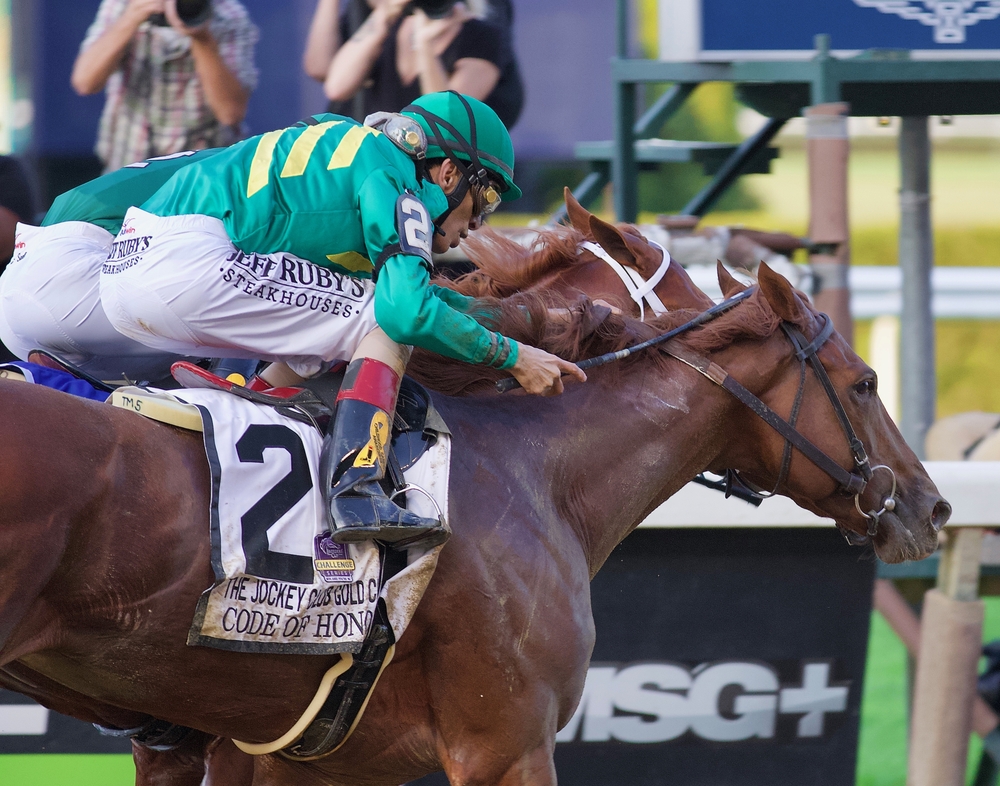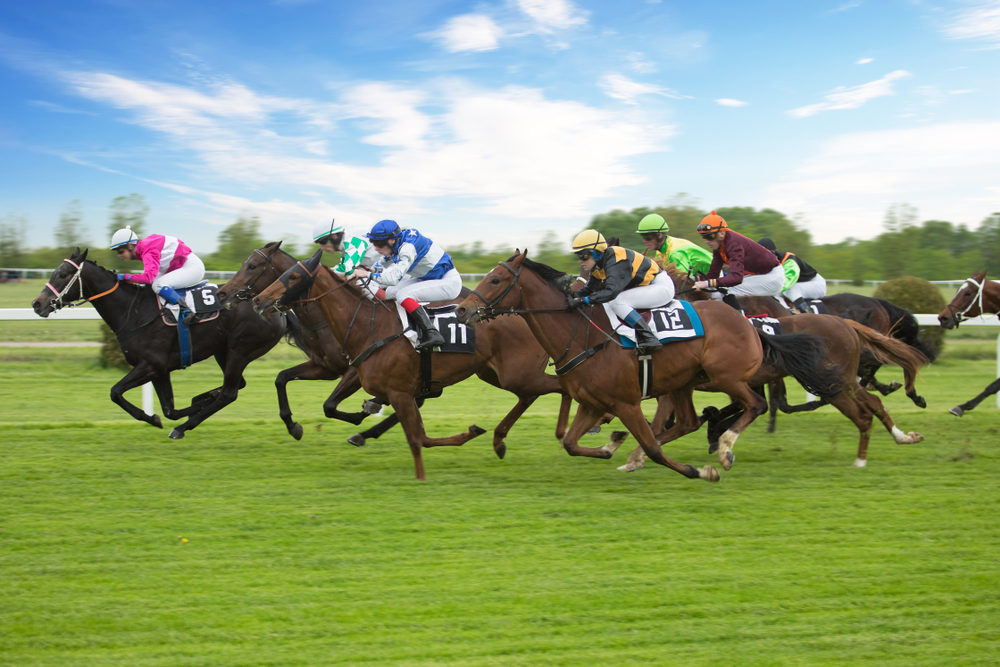If you look at horse racing results most days, you’ll know that some races are normally won by horses at big prices. That’s why one of the most popular questions we get asked is, how to pick outsiders in horse racing?
The first mindset you must conquer is the odds offered for any horse race are just the opinions of the various bookmakers. They may not necessarily be a true reflection of a horse’s chances of winning, which is the angle that all pro punters or professional horse racing tipsters are trying to exploit.
When picking outsiders in horse racing, you need to look for reasons why horses priced-up at big odds might suddenly show improved form. That might be reasons why they will take their form to a new level or why reasons why they may return to a level of form they have shown previously but not on their last few runs. Here are some of our favourites.
Ground Conditions
Ground conditions, also referred to as ‘the going’, can be a huge factor in determining which horses can win a race. Typical ground conditions range can be heavy, soft, good, and firm, with many in-between categories described using two of these words such as good-to-soft or good-to-firm. Some racecourses also describe the going using a more accurate reading provided by the going stick such as 3.7, etc.
Some horses may have the ability to win a variety of going descriptions, but most have a strong preference for one type of going or another. Finding a horse that has been out-of-form while running on unsuitable ground can often come back to form when returned to more suitable conditions.
Shrewd punters also tend to keep an eye on the weather forecast, as heavy rain just before the off could easily change the going description. This can cause massive late moves in a betting market, with some outsiders heavily backed with conditions suddenly turning in their favour.
The Distance Of The Race
Many racehorses are bred to excel at a certain distance, so it’s always worth considering the improvement a horse could find when running over a new distance for the first time. This is especially true of young horses on the flat.
Most two-year-old races are run at up to a mile, but many of the horses running in them will be bred to be at their best over longer distances later in their career. As three-year-olds, many will be asked to race over 10 furlongs and 12 furlongs and will show improved form over these distances. This scenario is another where outsiders are often bigger prices than they should be.
It’s the same in national hunt racing, with the younger horses often given time to learn their trade over jumps over the minimum distance of two miles. This is especially true of future chasers first learning to race over hurdles. They may not excel over the smaller obstacles, but top-class chasers are usually bred to jump fences rather than being top-class hurdlers who try a new discipline.
Horses For Courses
Horses for courses may be a bit of a cliché, but it’s still a good guide to how to pick outsiders in horse racing. Racecourses can be very different from each other, especially in the United Kingdom and Ireland. Courses can be a combination of left-handed or right-handed and flat or undulating, and these combinations will suit different types of horses.
Finding a horse that is returning to a course where he has run well before, or a similar course, can often be a reason for a return to form. This is especially true if he has been running below form in courses that don’t suit him as well.
The Draw
There is no draw in national hunt racing, but the stalls that horses are drawn in can be a massive factor on the flat. Inside draws can be critical at some courses like Chester where the turns are tight, whilst at others the draw has little effect.
You’ll often find that horses have been unlucky in the draw two or three times in succession can be outsiders, and a return to a good draw can often see an instant return to form. This is sometimes overlooked by bookmakers, making it a good way of how to pick outsiders in horse racing.
Trainer Form
Very few horse racing trainers have their horses in peak form throughout the season and working out when a trainer is about to hit form can be a good pointer to getting some value odds. It may be that a trainer specifically targets certain meetings and knowing this can help you pick outsiders. This is especially true of smaller unfashionable trainers whose horses often go off at bigger odds than they should be on the formbook.
Jockey Form
Some jockeys are good at all courses, but it’s always worth checking if a jockey has an unusually high strike rate at specific courses. It may just be that these courses suit their style. An example would be Jamie Spencer on the straight course at Ascot, where his hold-up style is often ideal in races where the front-runners go off to fast.
Handicapping
Handicapping is how many horse races are made competitive, as the allocation of different ratings and weights allows all horses to race on a perceived level footing. However, this is not always the case, as some horses are improving, while others may be coming down the weights after some below-par performances.
Improving horses are sometimes difficult to get a handle on, as some will win once and then be too highly handicapped, while others can string together a sequence of handicap wins. One point of study is the kind of rating similar horses by the same sires/mares have reached in the past and this is a potential indicator of how highly unexposed horses could rate in the future.
Just as a horse can go up in the handicap for performing well, they can also come down for performing poorly. For example, a horse may win off a mark of 80 but then may struggle to win off his new mark of 90. The trainer may then have to run him in four or five races to get him back on a winning mark, but horses returning around their last winning mark are often worth a second look. This is especially true if it coincides with a drop in class and a return to other combinations of optimum conditions that we’ve discussed.
Weights Carried
Races are often won by horses carrying a lightweight. This is especially true of many big national hunt handicaps where the previous season’s novices get to carry a lightweight for the first time. A horse that wins under such conditions may struggle to carry bigger weights but are well worth considering if they get these conditions again a few runs later.
The opposite can also be true, as some horses simply don’t have the class to run in top races but are big enough to carry big weights against lower-class horses. These patterns are especially noticeable in jumps racing, where horses often compete for several seasons.
Pace Of The Race
How fast a race will be run is often overlooked by amateur punters. For example, a front-runner may have looked very impressive when allowed to dictate his own pace and kicking-on from the front. But next time out he may face more competition for the lead and be forced to go faster than ideal, leaving him with nothing left in the tank to repel the late challengers.
Hold-up horses may be the opposite in that their ability to quicken off a fast pace is diminished in a slowly run race where everything can sprint at the end. But once they’ve proven they have this ability; they can often be outsiders when returned to an ideal race.
We hope that’s given you an insight into how to pick outsiders in horse racing. But as you can see, there’s a lot of studying required to consider all the possible factors in finding value selections at big odds. If you’ve not got time to do that amount of studying, don’t worry, there are lots of proven profitable tipsters you can follow who will do the analysis for you.






Thanks for the information.Its worth trying.